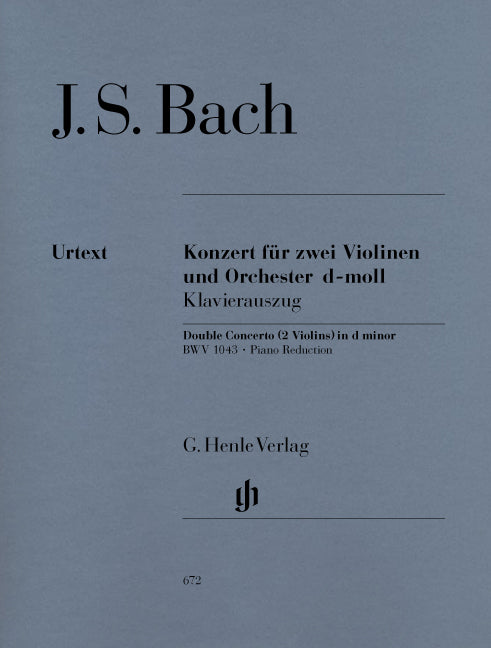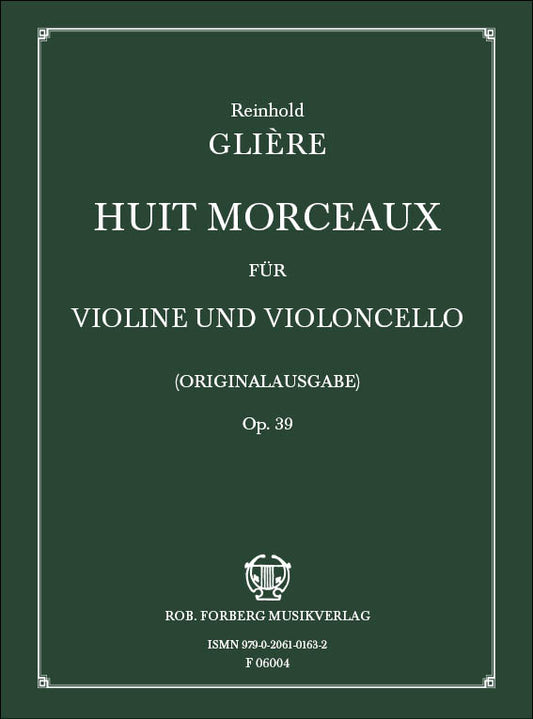-
Bach Concerto Dmin 2Vlns BWV1043 HN
Regular price £16.99Regular priceUnit price / per -
Position Jazz Cello duets Legg FM
Regular price £7.50Regular priceUnit price / per -
Twos Company Vln & Cello Op157B Wiggins
Regular price £13.75Regular priceUnit price / per -
12 Easy Duets Op.141 two cellos Wiggins
Regular price £12.25Regular priceUnit price / per -
Bach Concerto for 2 vln D min BWV1043 P
Regular price £16.95Regular priceUnit price / per -
Gliere Huit Morceaux Vln & VC Op39 Forb
Regular price £17.99Regular priceUnit price / per -
Classical Duets for Violin DH
Regular price £18.99Regular priceUnit price / per -
Flying Start for Strings Thorp Vln Duet
Regular price £8.99Regular priceUnit price / per -
Disney Songs for Violin and Cello Duet
Regular price £15.99Regular priceUnit price / per -
Voila Viola Duets Gr3-5 CR
Regular price £6.95Regular priceUnit price / per -
First 50 Duets for Violins HL
Regular price £15.99Regular priceUnit price / per -
Viola Time Duets Blackwell
Regular price £9.95Regular priceUnit price / per -
Cello Time Duets Blackwell
Regular price £9.95Regular priceUnit price / per -
Bartok 21 Duos Vla&Vc UE
Regular price £18.99Regular priceUnit price / per -
Vivaldi Concerto in D Minor RV514 IMC
Regular price £15.50Regular priceUnit price / per -
First 50 Duets for Cellos HL
Regular price £15.99Regular priceUnit price / per -
Bartok Duets for 2 Vlas Vol1 UE
Regular price £18.99Regular priceUnit price / per -
Bartok 44 Duets for Two Violas EMB Z1497
Regular price £17.99Regular priceUnit price / per -
12 Easy Duets op.141 two double basses W
Regular price £12.25Regular priceUnit price / per -
12 Easy Duets op.141 Violin + Viola Wigg
Regular price £12.25Regular priceUnit price / per
Collection:
Sheet music for string duets refers to musical compositions written specifically for two string instruments, typically violins, violas, cellos, or sometimes combinations of these instruments. The music is composed to showcase the interplay between two instruments, often with complementary or contrasting roles in melody and harmony.
History:
-
Baroque Era: The tradition of string duets began in the Baroque period (1600–1750), where composers like Arcangelo Corelli and Georg Philipp Telemann wrote duets for violin or violin and basso continuo. The use of basso continuo meant that one instrument typically provided the harmonic foundation while the other played the melody.
-
Classical Era: In the 18th century, composers like Joseph Haydn and Wolfgang Amadeus Mozart significantly expanded the concept of string duets. Haydn wrote many duets for violin and cello, focusing on more sophisticated interplay between the two voices. Mozart's duets often featured two equal parts, allowing for more expressive interaction between the instruments.
-
Romantic and Modern Eras: In the 19th and 20th centuries, the popularity of string duets continued, with composers such as Felix Mendelssohn and Claude Debussy exploring new harmonic textures and emotional depth. As musical styles evolved, duets became more varied in form, incorporating new techniques and exploring a wider range of moods and complexities.
Today, string duets are popular in both classical and contemporary music, often written for violin and cello or two violins, though other combinations appear as well.


















